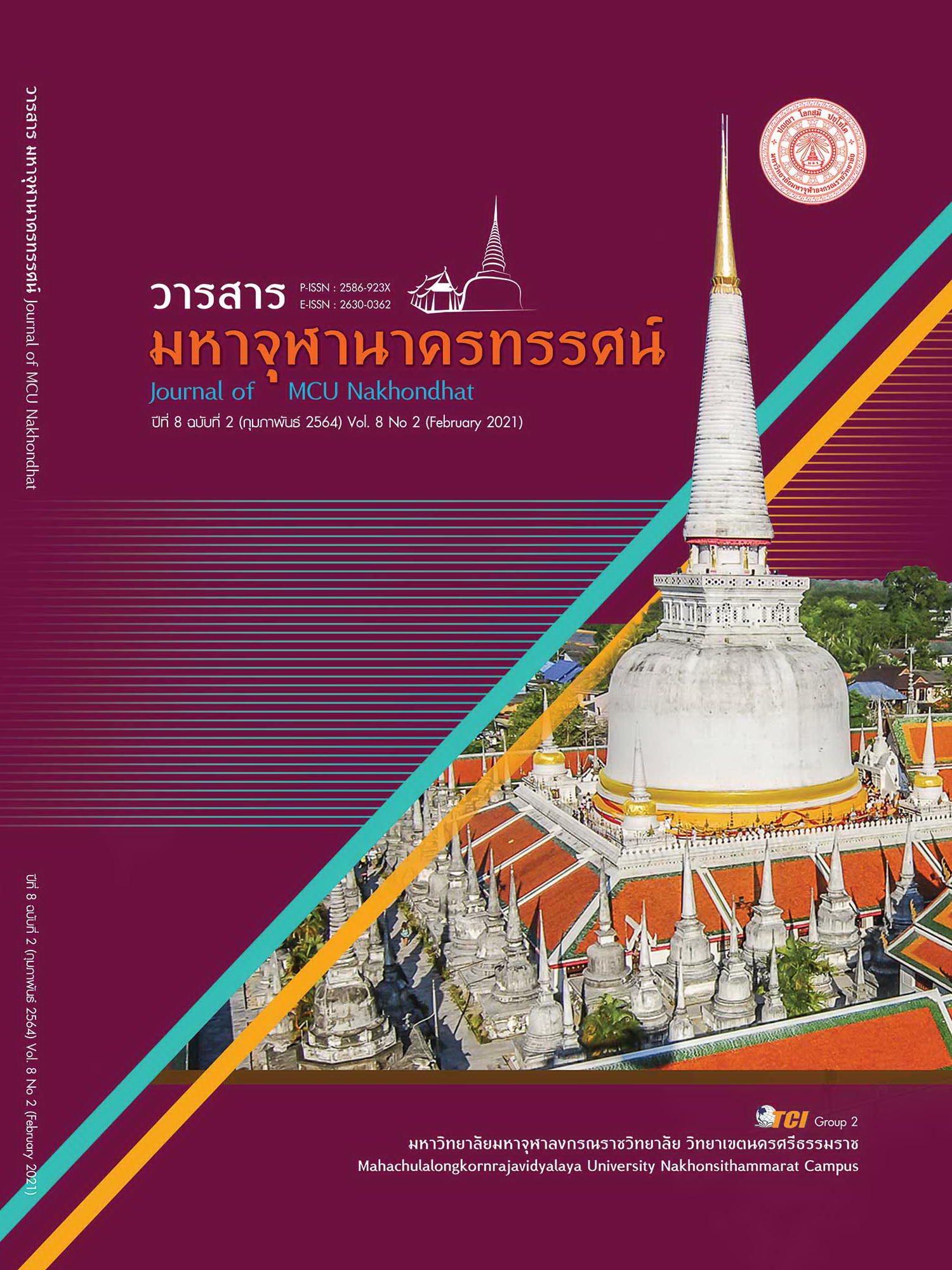ARTWORKS’ CREATION FOR COMMUNITY ECONOMIC ENHANCEMENT IN LANNA PROVINCES
Main Article Content
Abstract
The main significant purpose of this study was to investigate creative artwork creation, leading to community income enhancement. The mixed methods design was applied in this study. The research instruments consisted of in - depth interview and focus group discussion. The data were collected from 30 participants, documents, as well as field trial and analytical description. The results were found that the creation of artworks aims to enhance community income and economic prosperity of Northern provinces, situated in the area of the former Lanna Kingdom. The finding also highlights that its processes not only strengthen communities self - reliant, but also encourage people form a group to work together, leading to economic enhancement and the creation of community standards. Additionally, the result casts a new light on the quality of community products, which is continually improved and certified, leads to marketing certifications and the increase in the value of products. Furthermore, in order to create creative new local products, designing, developing and creating products’ distribution network in productive and effective ways are currently required. This suggests that the processes of making products should conform to community’s fundamentals and potential, including its resources, local wisdom and culture. As government and private organizations play a vital role in local community’s economic and social enhancement, communities are progressively developed faster, better, and smarter. Most importantly, due to the integration of local wisdom and creative modern artworks, as well as the processes of presenting the stories behind local products and brands (or “story product”), the majority of products are designed and created to meet customers’ needs. From these mentioned results, it is clear that local economics and people’s quality of life based on self - reliance are continually and sustainably enhanced.
Article Details
References
จรัสพิมพ์ วังเย็น. (2554). แนวคิดหลังสมัยการย้อนสู่โลกแห่งภูมิปัญญา. วารสารสถาบันวัฒนธรรมและศิลปะ, 13(1), 20-23.
จิราพัทธ์ แก้วศรีทอง. (2563). การจัดการและพัฒนาองค์ความรู้ภูมิปัญญาท้องถิ่นเพื่อเชื่อมโยงสู่วิสาหกิจชุมชนในจังหวัดแพร่: กรณีการทำผ้าหม้อห้อมของชาวไทยพวน. วารสารพัฒนาสังคม, 22(1), 69-81.
ตระกูลพันธ์ พัชรเมธา. (2557). ผลิตภัณฑ์หัตถกรรมกับการพัฒนาสู่สินค้าหนึ่งตำบลหนึ่งผลิตภัณฑ์. วารสารมหาวิทยาลัยศิลปากร ฉบับภาษาไทย สาขาสังคมศาสตร์ มนุษยศาสตร์ และศิลปะ, 36(3), 71-73.
ตุณท์ ชมชื่น และสมชายใจบาน. (2558). การเสริมสร้างศักยภาพการผลิต ผลิตภัณฑ์ชุมชนผ้าทอกระเหรี่ยง ตามแนวคิดเศรษฐกิจพอเพียงและเศรษฐกิจสร้างสรรค์: กรณีชุมชนตำบลแม่ยาว อำเภอเมือง จังหวัดเชียงราย. วารสารการพัฒนาชุมชนและคุณภาพชีวิต, 3(2), 203-214.
ปิยะวัน เพชรหมี และคณะ. (2561). การพัฒนาผลิตภัณฑ์ผ้าทอพื้นเมืองในจังหวัดเพชรบูรณ์สู่การพัฒนาเชิงพาณิชย์. ใน รายงานการวิจัย. มหาวิทยาลัยราชภัฏเพชรบูรณ์.
ภาณุพงศ์ จงชานสิทโธ. (2563). ผ้าชนเผ่าในล้านนา: รูปแบบ ความสวยงาม และคุณค่าของหัตถกรรมคนชายขอบ. วารสารอาศรมวัฒนธรรมวลัยลักษณ์ มหาวิทยาลัยวลัยลักษณ์, 20(1), 26-39.
ศศิพร ต่ายคำ และนรินทร์ สังข์รักษา. (2558). การพัฒนารูปแบบผลิตภัณฑ์สร้างสรรค์เพื่อเพิ่มมูลค่าของวิสาหกิจชุมชน จังหวัดราชบุรี. วารสาร Veridian E - Journal, Silpakorn University, 8(1), 606-632.
ศูนย์ส่งเสริมศิลปาชีพระหว่างประเทศ. (2557). เอกลักษณ์และศิลปะลวดลายชาวเขา. กรุงเทพมหานคร: บริษัท สยามคัลเลอร์พริน จํากัด.
สำนักงานพัฒนาสังคมและความมั่นคงมนุษย์จังหวัดแพร่. (2562). รายงานสถานการณ์ทางสังคมจังหวัดแพร่ประจำปี 2562 . จังหวัดแพร่: เมืองแพร่การพิมพ์ จำกัด.
อิสริยาภรณ์ ไชยสูง. (2560). กลยุทธ์การตลาดผลิตภัณฑ์ผ้าทอกระเหรี่ยงบ้านพระพุทธบาทห้วยต้ม ตำบลนาทราย อำเภอลี้ จังหวัดลำพูน. ใน รายงานการวิจัย. มหาวิทยาลัยแม่โจ้.


